Week 3a Joint and Tissue Mechanics Lecture
1/39
There's no tags or description
Looks like no tags are added yet.
Name | Mastery | Learn | Test | Matching | Spaced |
|---|
No study sessions yet.
40 Terms
diarthroses joints characteristics
Synovial fluid filled cavity, permit moderate to extensive movement
Diarthroses joint examples
Shoulder, apophyseal (facet) joint of spine, knee, ankle
Synarthroses joint characteristics
Reinforced by combination of fibrous and cartilaginous CT, permit slight to no movement
Two types: fibrous and cartilaginous
Fibrous Joints
inflexible layers of dense connective tissue, holds the bones tightly together
EX: skull sutures
Cartilaginous joints
allow only slight movement and consist of bones connected entirely by cartilage
EX: symphysis pubis, IVD
Degrees of Freedom
Number of independent directions of movement at joint, can have up to 3
Hinge Joint
1 DOF, 1 axis of rotation
Angular motion primarily in plane located at right angle to the axis
EX: elbow

Pivot joint
1 DOF, 1 axis of rotation
ANgular motion is parallel to axis of rotation
EX: forearm
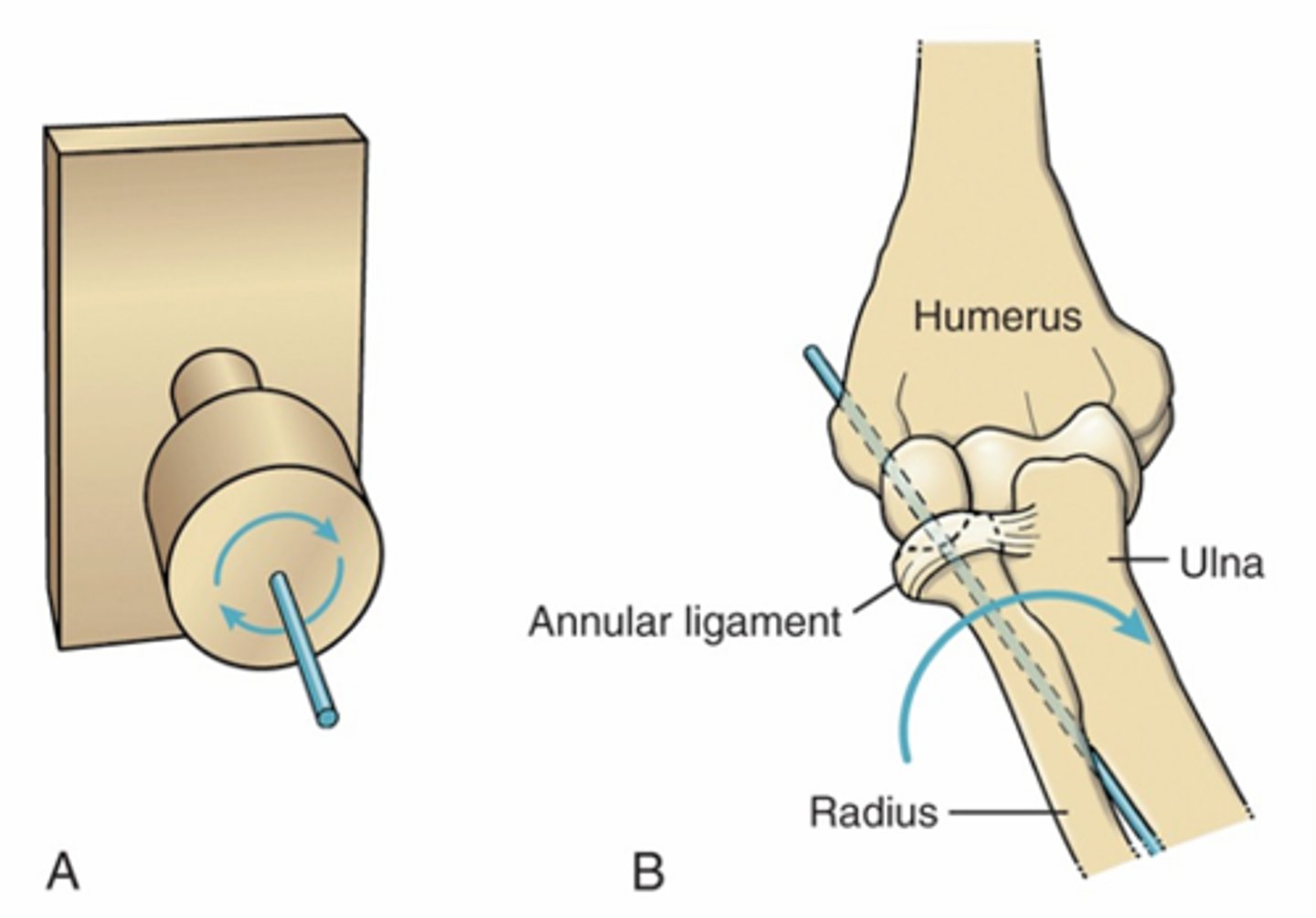
Ellipsoid joint
2 DOF, 2 axis of rotation
Elliptic surfaces restrict spin between the two
EX: wrist
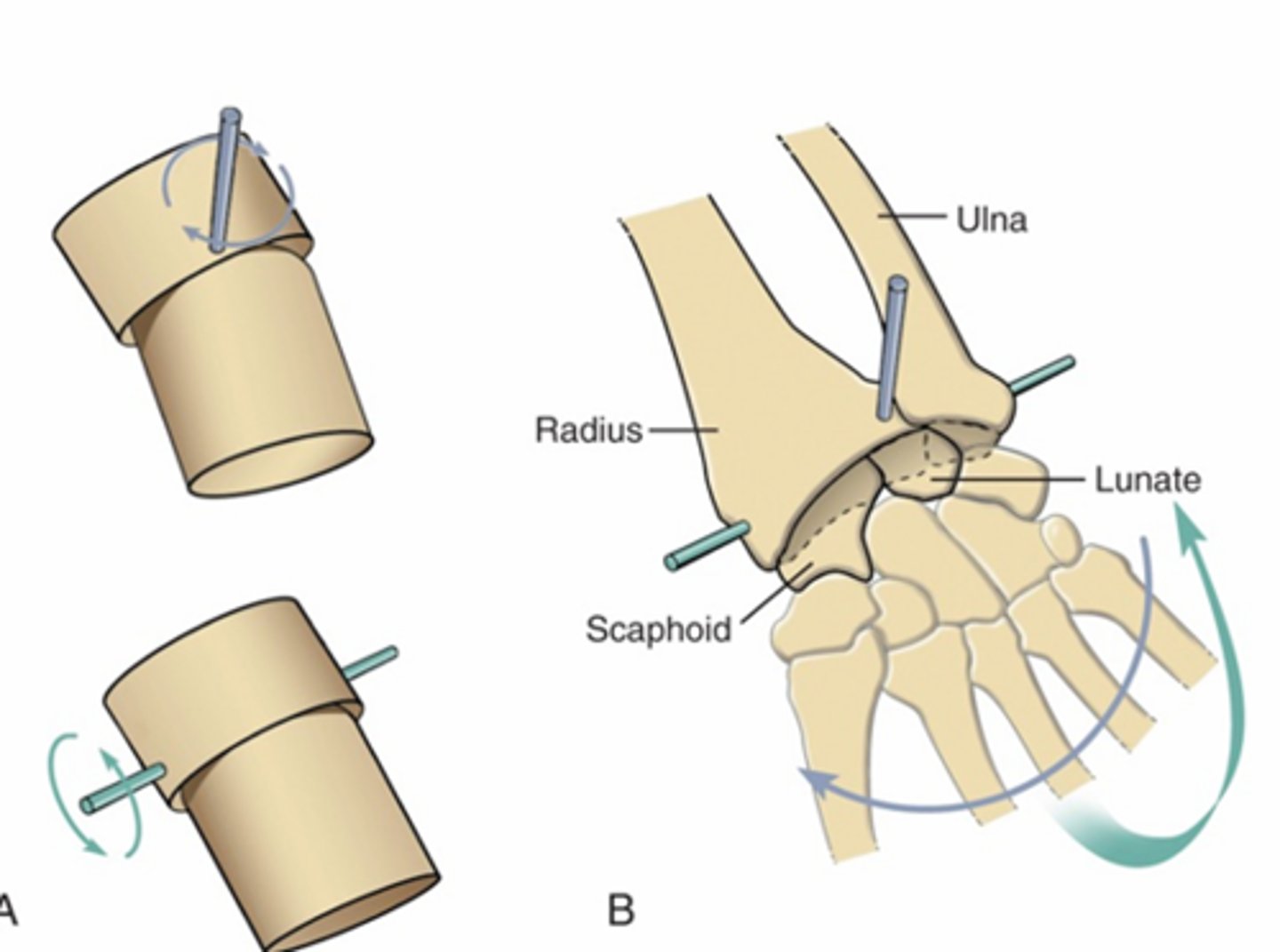
Ball and Socket Joint
3 DOF, 3 axis of rotation
Surfaces allow spin without dislocation
Movement in all 3 cardinal planes
EX: hip, shoulder

Condyloid joint
2 DOF, 2 axis of rotation
Ligaments or bone structure (come in pairs) limits third degree of freedom
EX: Knee
Saddle joint
2 DOF, 2 axis of rotation
Concave surface on convex surface or vice verse
EX: 1st metacarpophalangeal joint
Planar joint
1 rotational DOF, 2 translational DOF, lack definitive axis of rotation
EX: 2nd-5th metacarpals
Diarthrodial joint elements
Always
- Synovial fluid, articular cartilage, joint capsule, synovial membrane, ligaments, blood vessels, sensory nerves
Sometimes
- Intra-articular discs/menisci, peripheral labrum, fat pads, bursa, synovial plates
CT Composition
ground substance, fibers, and cells
Periarticular CT
Dense Connective
- Regular = tendons and ligaments
-Irregular = joint capsules
Cartilage
- Articular
- Fibro
Bone
Stiffness
= change in Force/change in length
Refer to elastic properties graph
Stress
= Force / Cross Sectional Area
Strain
= elongation (change in length) / original length
Viscoelastic Materials
have both elastic and viscous response
Elastic materials
Strain when stretched and immediately return to original state when stress removed, they are time-independent
Viscous material
resist shear flow and strain linearly with time when stress is applied, they are time dependent
Young's Modulus
stress/strain
Elastic region of stress/strain curve
Added stress to the tissue results in greater deformation, though the tissue returns to its resting length if the stretch force is not maintained. Tissues with greater stiffness will have a steeper slope in this portion of the curve
Plastic region of stress/strain curve
The addition of more stress results in permanent deformation even after the stretch force is no longer applied due to the failure of bonds between the collagen fibers at the yield point
Yield point of stress/strain curve
Max strain without permanent changes
Ultimate failure point of stress/strain curve
complete tissue failure
Toe in region of stress/strain curve
Beginning part, many fibers are stretching causing a gradual increase in stiffness
Bone in stress/strain curve
Yield point reached quickly when strain is applied
Has a high Young's Modulus, more stiff
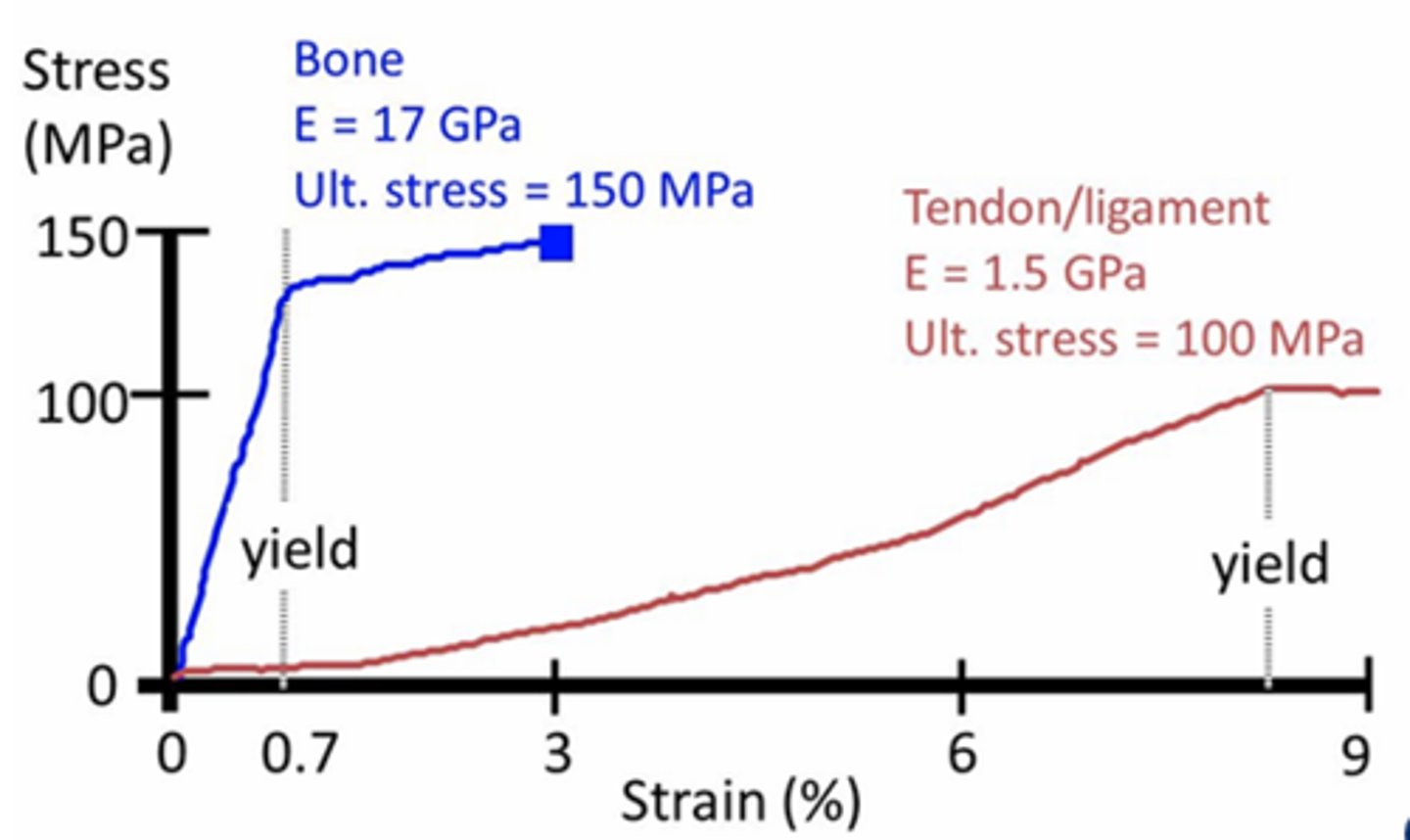
Tendon and ligaments in stress/strain curve
Yield point reached later when strain applied
Has a low Young's Modulus, more compliant
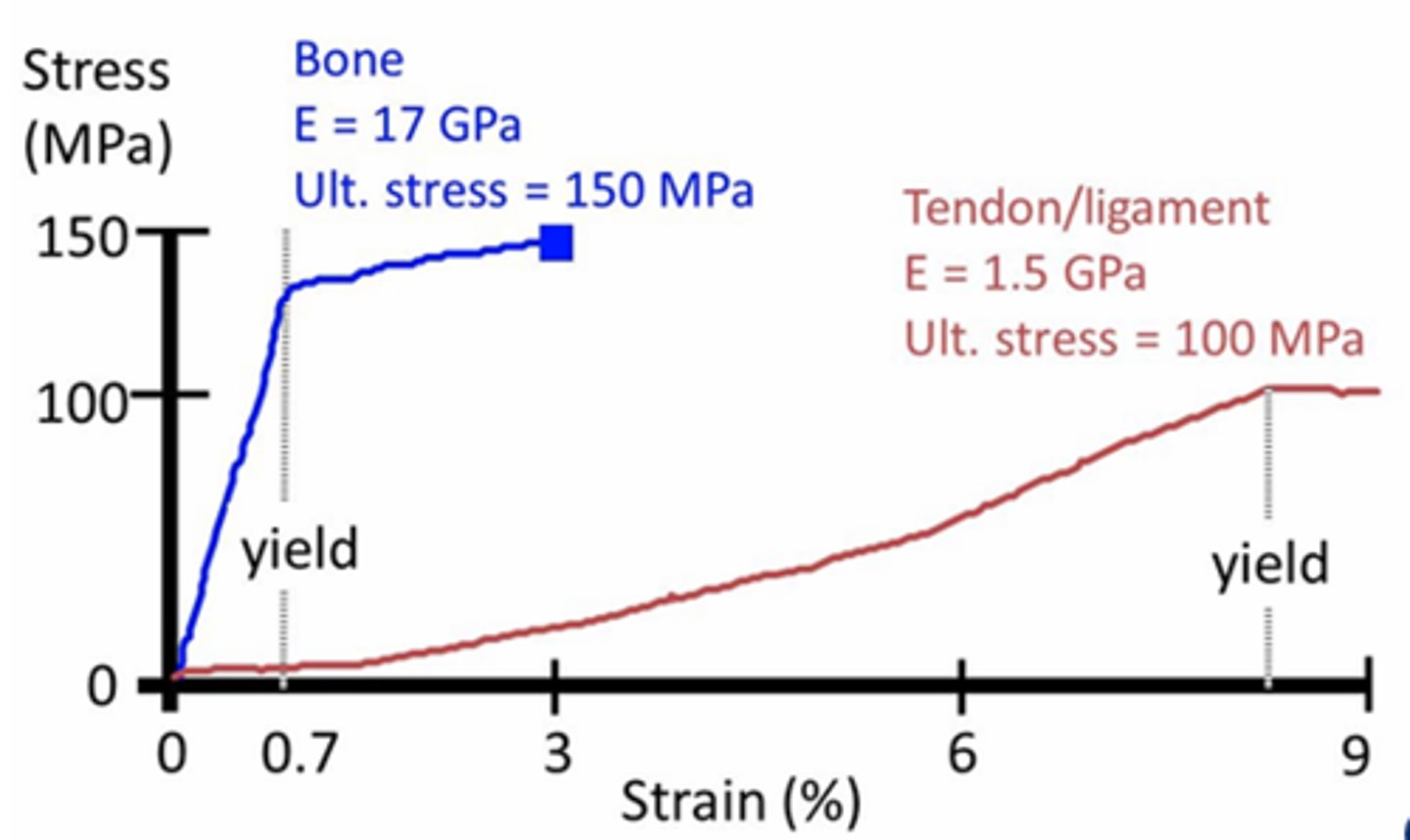
Viscoelastic Properties
Time dependent
- Creep
- Stress Relaxation
Creep
Load constant, displacement is changing
Continued deformation/displacement/length over time under constant load
Deformation occurs until state of equilibrium
EX: tree branch, with weight at distal end
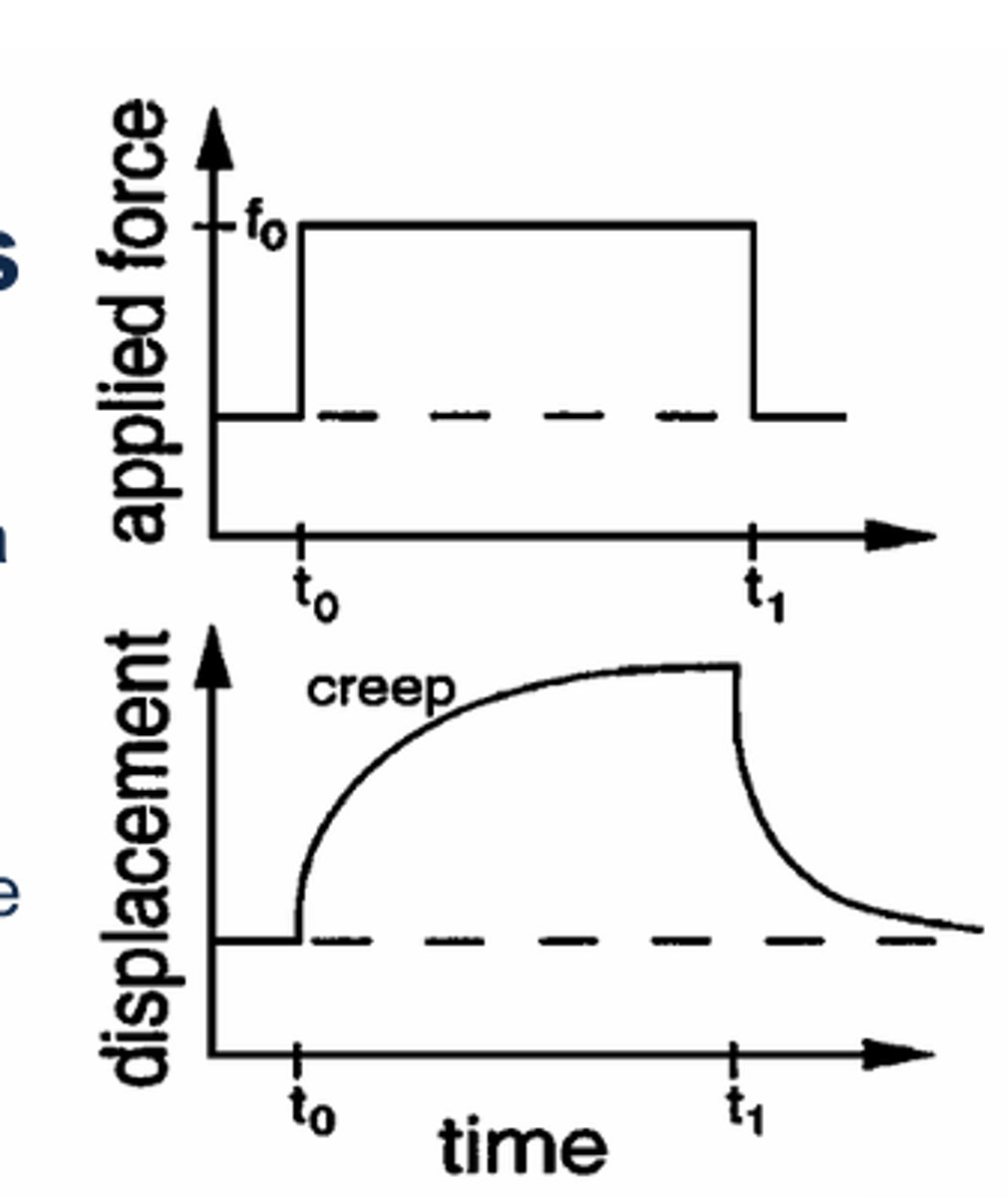
Stress Relaxation
Load changes, displacement constant
Continued length over time while force decreases until equilibrium reached
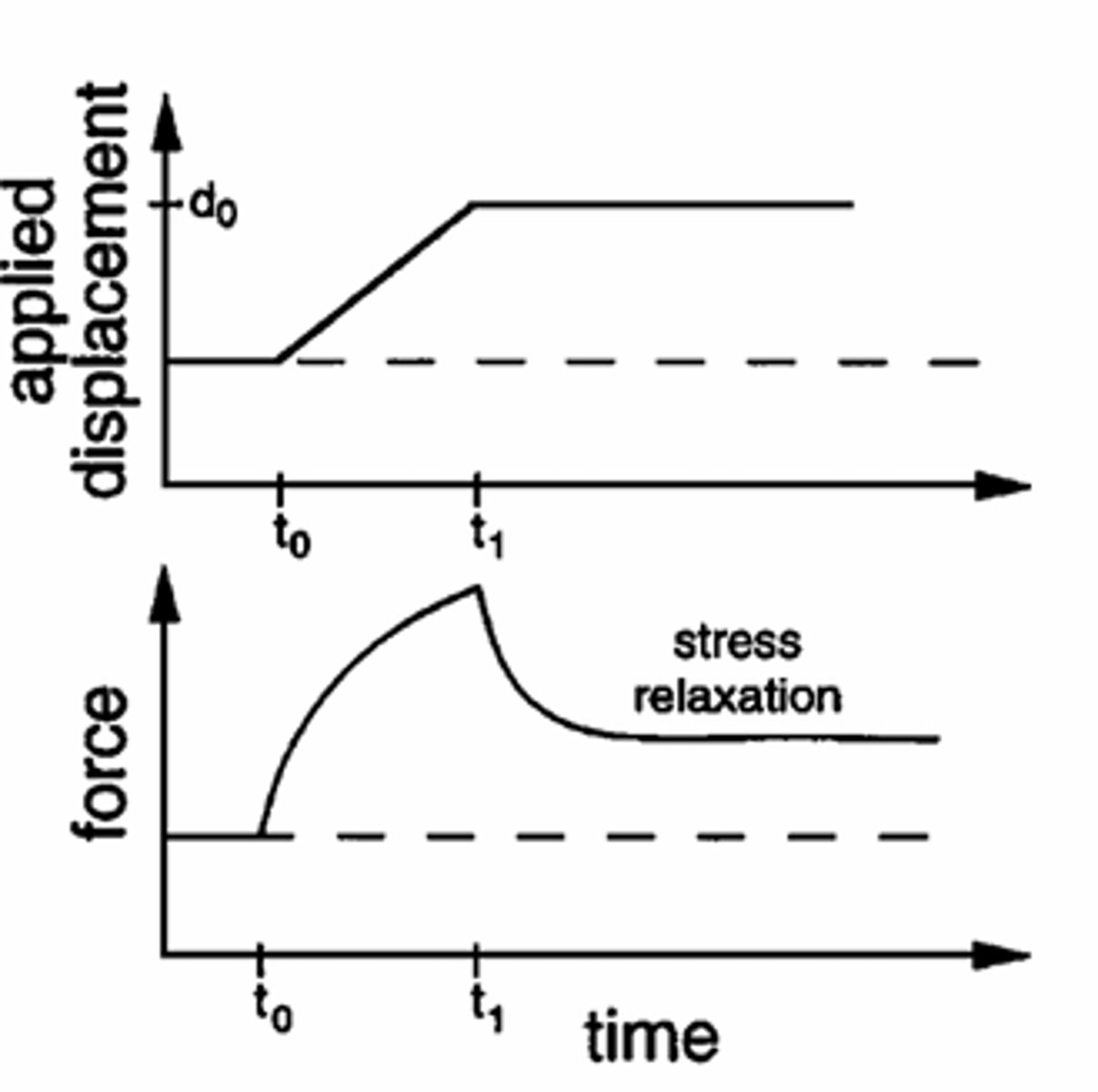
LLPS
Adaptations in one session due to viscoelastic properties and neurological changes
Long term due to remodeling
Creep LLPS
Prone hangs using weights or gravity
Stress Relaxation LLPS
Splints, dynasplints
Loading rate
Speed at which a force is applied
A higher loading rate means viscoelastic materials are more stiff
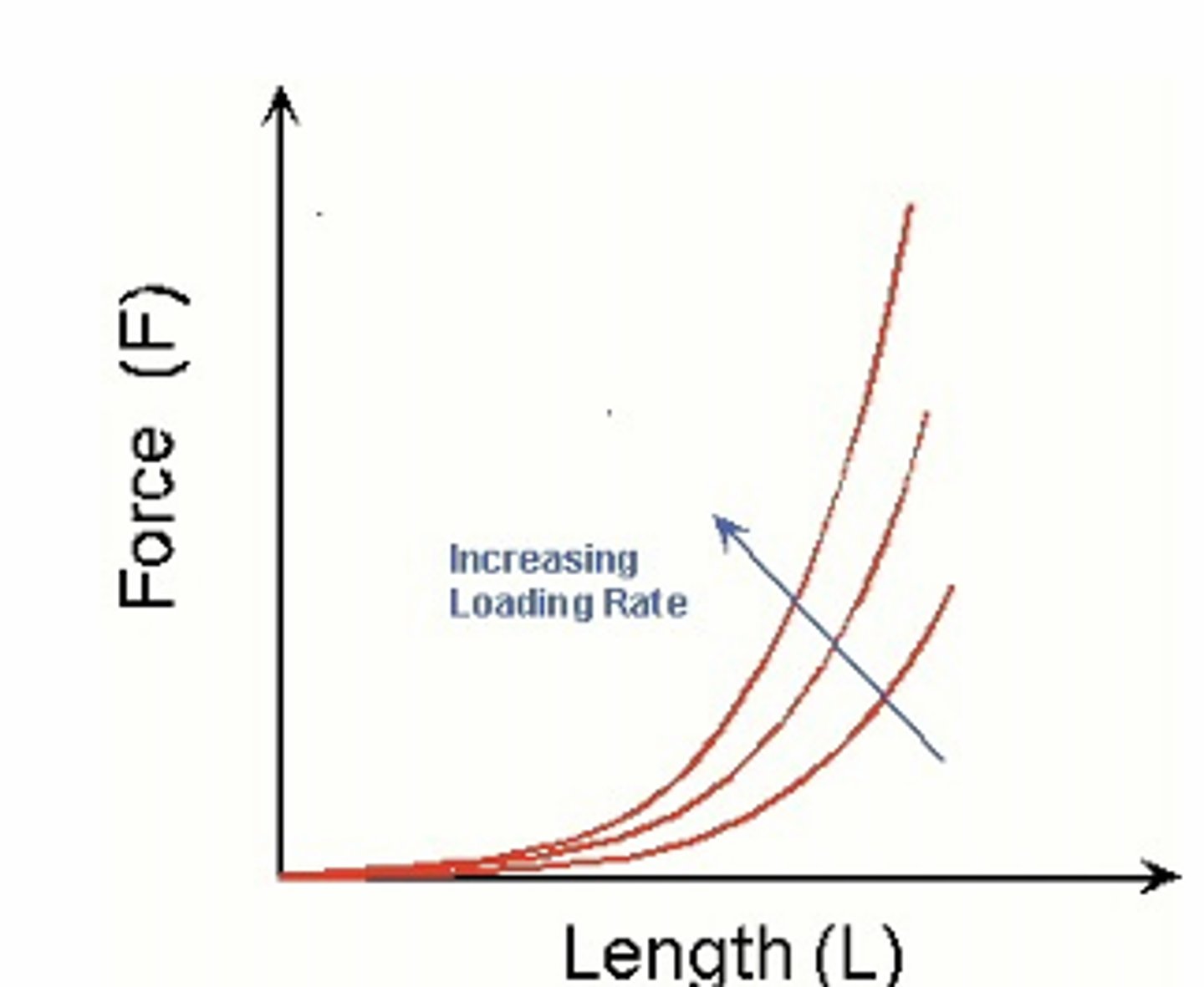
Pre-conditioning
Multiple cycles to increase muscle length for the same force
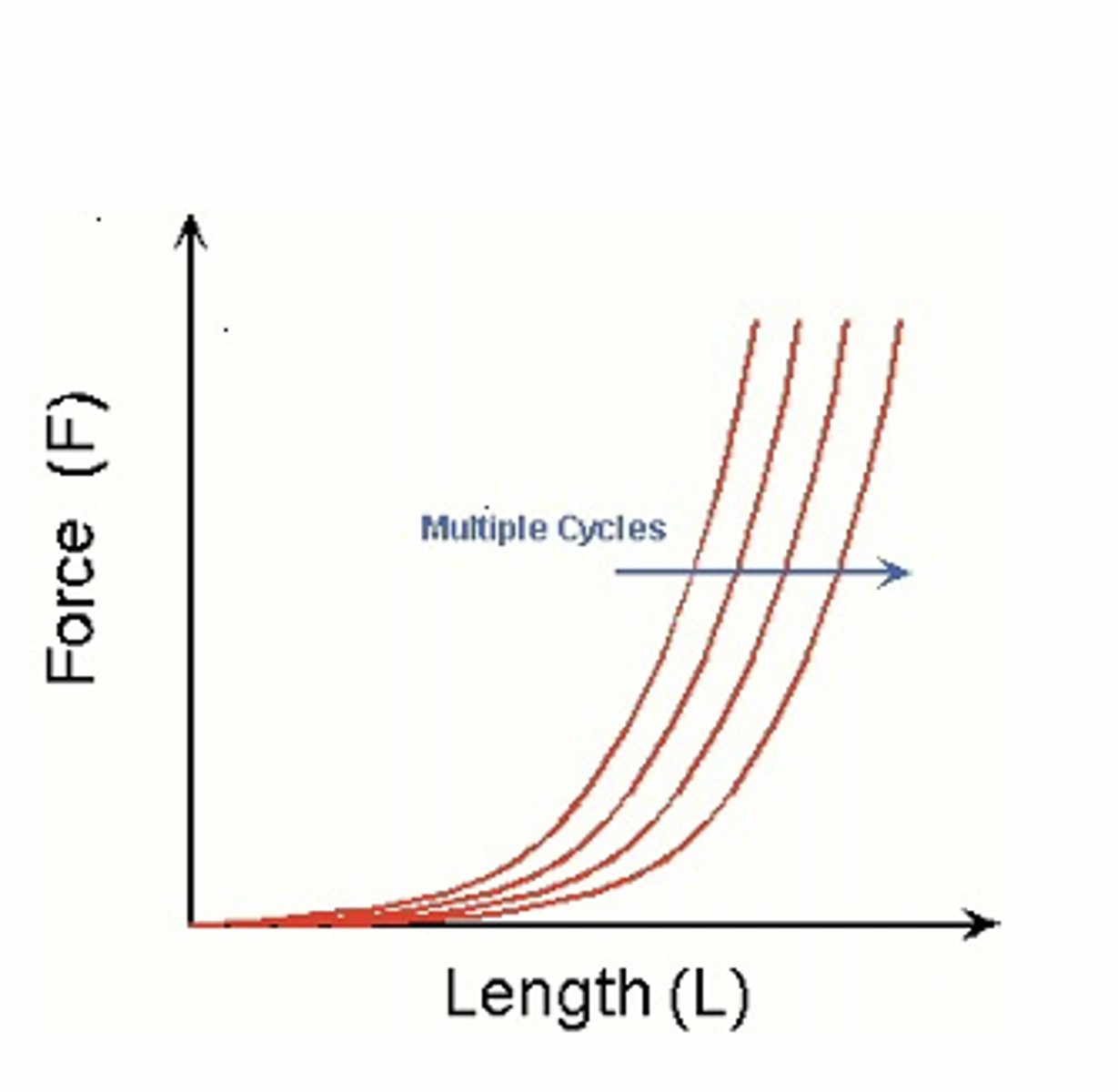
Hysteresis
When some energy of load is dissipated (related to metabolic activity) so that not all energy is returned --> creates displacement
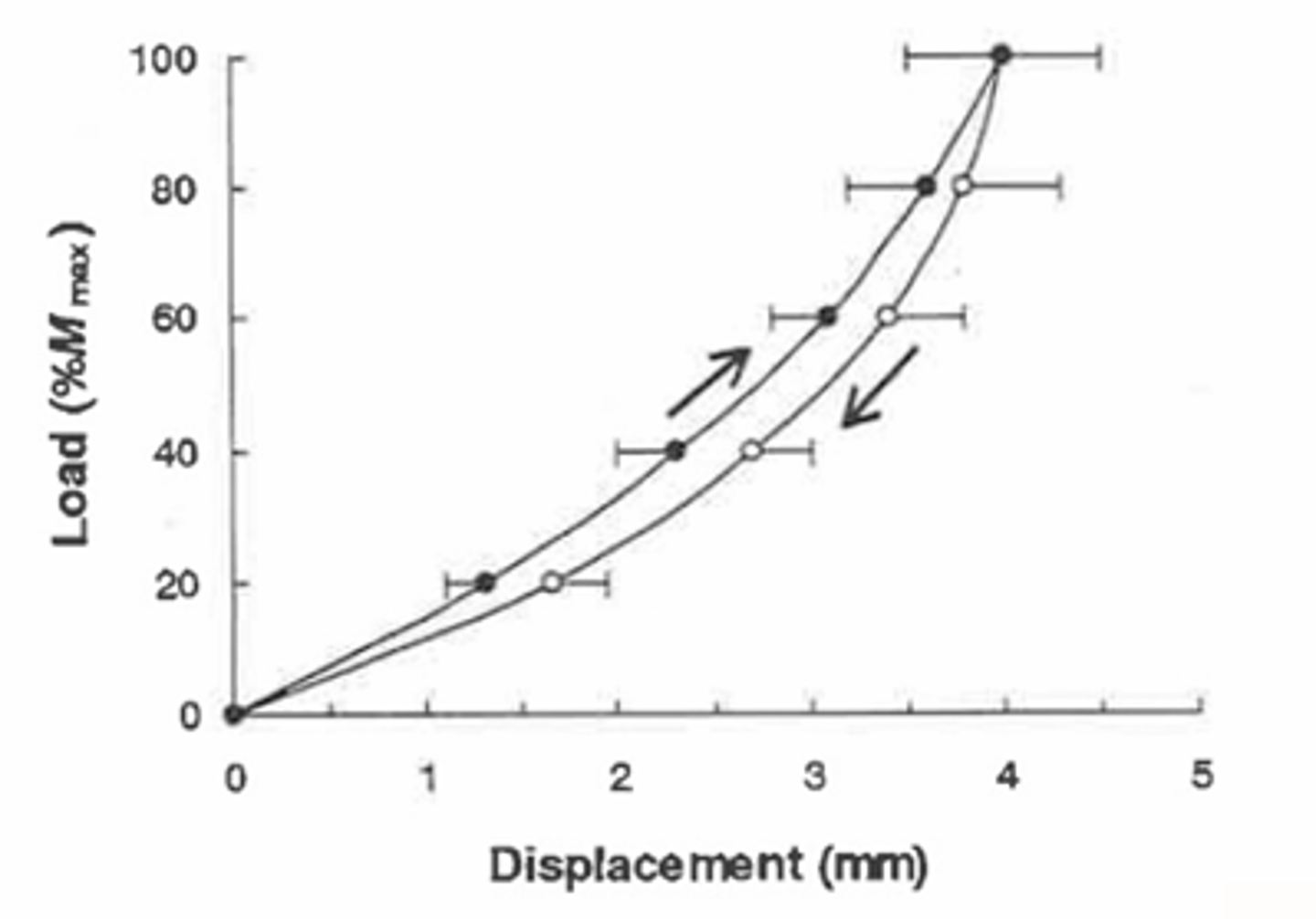
High Load Brief Stretch
Changes due to pre-conditioning and loading rate dependencies
EX: static and dynamic stretching